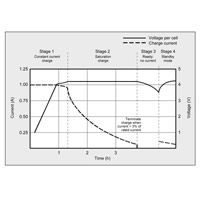The technology exists to produce a battery that will last 500 charges without degrading significantly.
Just look at your phone battery for a start.
Or any electric car battery.
lf the O/P is correct about the Shimano battery degradation then it's down to poor manufacture rather than new technology.
Ebikes have been around for years. My 2016 Cube Ebike had a Bosch battery and that didn't degrade noticeably in the two years we had it.
However it seems to be only the O/P who is having the big problem with Shimano batteries, l've looked online and can't find anything significant regarding early battery failure.
And mine has been fine, although it did show a reduction in capacity to 90% after ten charges from new.
But this is with an aftermarket app. l've not noticed an actual reduction in range on a full charge, but l am not sure l would notice a 10% drop in capacity.
As the bike is ridden in varied conditions and it's difficult to put a mileage on the battery with a full charge. Last night l did most of the ride in "trail" because l was pushed for time, so l can't compare it to the ride the day before when l was mostly in "eco"
Just look at your phone battery for a start.
Or any electric car battery.
lf the O/P is correct about the Shimano battery degradation then it's down to poor manufacture rather than new technology.
Ebikes have been around for years. My 2016 Cube Ebike had a Bosch battery and that didn't degrade noticeably in the two years we had it.
However it seems to be only the O/P who is having the big problem with Shimano batteries, l've looked online and can't find anything significant regarding early battery failure.
And mine has been fine, although it did show a reduction in capacity to 90% after ten charges from new.
But this is with an aftermarket app. l've not noticed an actual reduction in range on a full charge, but l am not sure l would notice a 10% drop in capacity.
As the bike is ridden in varied conditions and it's difficult to put a mileage on the battery with a full charge. Last night l did most of the ride in "trail" because l was pushed for time, so l can't compare it to the ride the day before when l was mostly in "eco"

